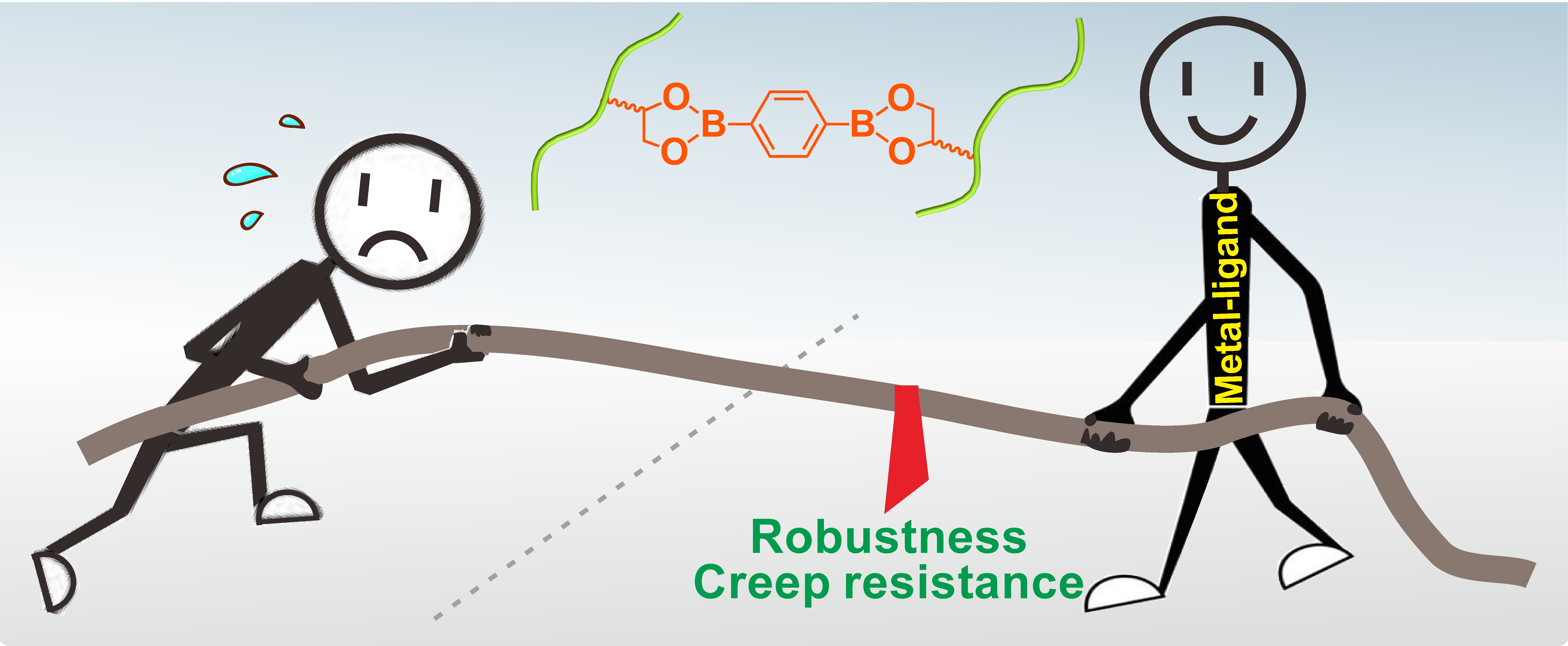| 祝贺博士生刘英俊在《J Mater Chem A》上发表文章 |
| 发布时间: 2019-11-05 浏览次数: 614 |
|
Biomimetic Design of Elastomeric Vitrimers with Unparalleled Mechanical Properties, Improved Creep Resistance and Retained Malleability by Metal-Ligand Coordination Yingjun Liu, Zhenghai Tang,* Dong Wang , Siwu Wu and Baochun Guo* Abstract: Vitrimers can undergo network reshuffling via exchange reactions, imparting the covalently crosslinked polymers with malleability and reprocessibility. In the case of elastomeric vitrimers, they usually suffer from poor mechanical properties and undergo undesired creep at service temperature. Thus far, the incorporation of fillers and introduction of static cross-links are feasible solutions to improve mechanical properties and creep resistance, which, however, inevitably hampers network arrangement and deteriorates the dynamic properties. Herein, we demonstrate a rational design of elastomeric vitrimers with an integration of unparalleled mechanical properties, improved creep resistance and retained malleability by engineering Zn2+−imidazole complex into the network. Specifically, commercially available styrene-butadiene rubber (SBR) grafted with 2-(2-benzimidazolyl)ethanethiol is covalently crosslinked with dithiol-containing boronic ester cross-linker through thiol-ene “click” chemistry reaction. Afterwards, Zn2+−imidazole complexes are introduced and lead to the formation of micro-phase separated structure. Zn2+−imidazole complexes can function as sacrificial units through reversible breaking and reforming events, leading to significant enhancements on the modulus, strength and toughness while maintaining the extensibility of the networks. In addition, the creep resistance at service temperature is improved as the Zn2+−imidazole complexes can act as cross-links to restrict segment mobility. Whereas, the network arrangement at elevated temperatures is not affected due to the dissociation of Zn2+−imidazole complexes, allowing the networks to be reshaped and recycled.
文章链接:https://pubs.rsc.org/en/content/articlepdf/2019/ta/c9ta10909a |

